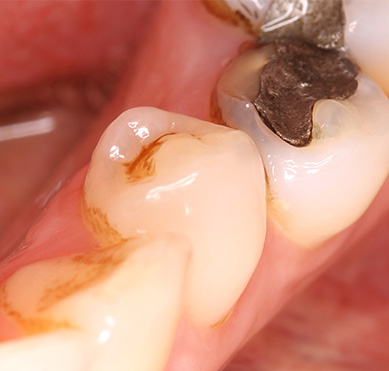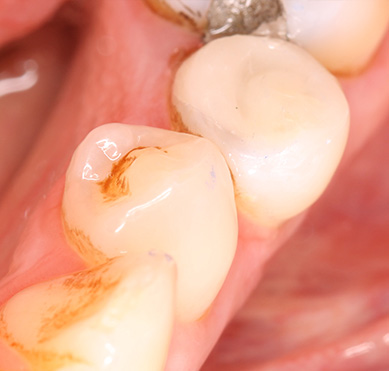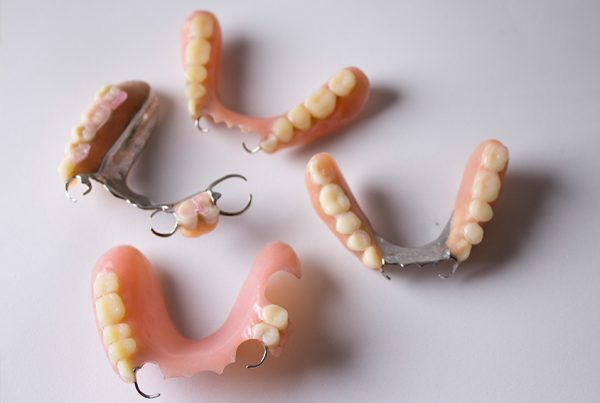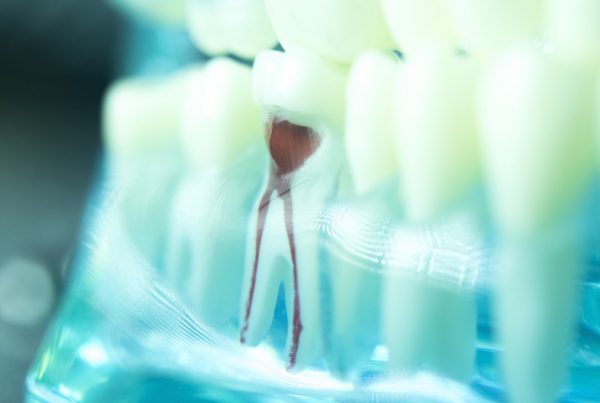A filling does exactly what it sounds like. Where there is decay, we scoop out all of the bugs and rotten tooth and then we fill the hole left in the tooth. Usually, this will require the tooth to be numbed so that it is comfortable to remove all the nasty stuff. It’s a very simple thing to do and the idea is to stop the hole getting bigger so that you can save as much of the tooth as possible. There are lots of different materials available to fill a cavity but the two main options are a metal filling or a tooth coloured filling.

Amalgam filling
Metal fillings
Metal fillings are made of a material called amalgam. It is mainly made of silver but it does also have mercury in it. Amalgam gets a lot of bad press because of the mercury content but there is no solid, scientific evidence that it causes side effects in people that have them. Lots of patients ask to have all of their amalgam fillings removed for health reasons. Something that is very important for patients to be aware of when asking to have their fillings replaced is that drilling out the amalgam releases a lot more mercury than just leaving them there. So if this is something you want to have done, it is something that the dentist must do very carefully.

Tooth coloured filling
Tooth coloured fillings
Whatever the arguments about metal fillings, we can all agree that they don’t look particularly nice. A much nicer and more modern type of filling material is something called composite. This is basically a tooth coloured material which is glued into or onto the tooth. It is used at the front and back of the mouth and looks more like a tooth rather than a bit of silver. This is a fantastic material and recent advancements mean that these tooth coloured fillings are lasting longer and longer.
Benefits and Risks
The benefit of having a filling is that any decay is removed and halted. The area is filled up so you can keep it clean.
The risk with a deep filling is that the tooth can become painful and need more treatment. I wouldn’t blame this on the filling though. The pain has ultimately been caused by the bacteria that made the hole in the first place. The filling was necessary to stop the hole getting bigger. If a tooth is painful after you’ve had a filling, the chances are that the tooth was about to become painful anyway.
The consequences if decay is not treated is that the hole could get bigger and bigger, leading to the tooth breaking down and you losing the tooth.
Keep updated with the Online Dentist newslettersign up today
Recent Articles
 A denture is a false tooth or teeth on a plate. They are not fixed in place and can be taken in and out. They are generally the easiest way...
A denture is a false tooth or teeth on a plate. They are not fixed in place and can be taken in and out. They are generally the easiest way...
 Gum disease is when bacteria have got underneath your gums and are damaging the supporting tissues of your teeth. If you get rid of the bacteria, you’ll stop the damage....
Gum disease is when bacteria have got underneath your gums and are damaging the supporting tissues of your teeth. If you get rid of the bacteria, you’ll stop the damage....




